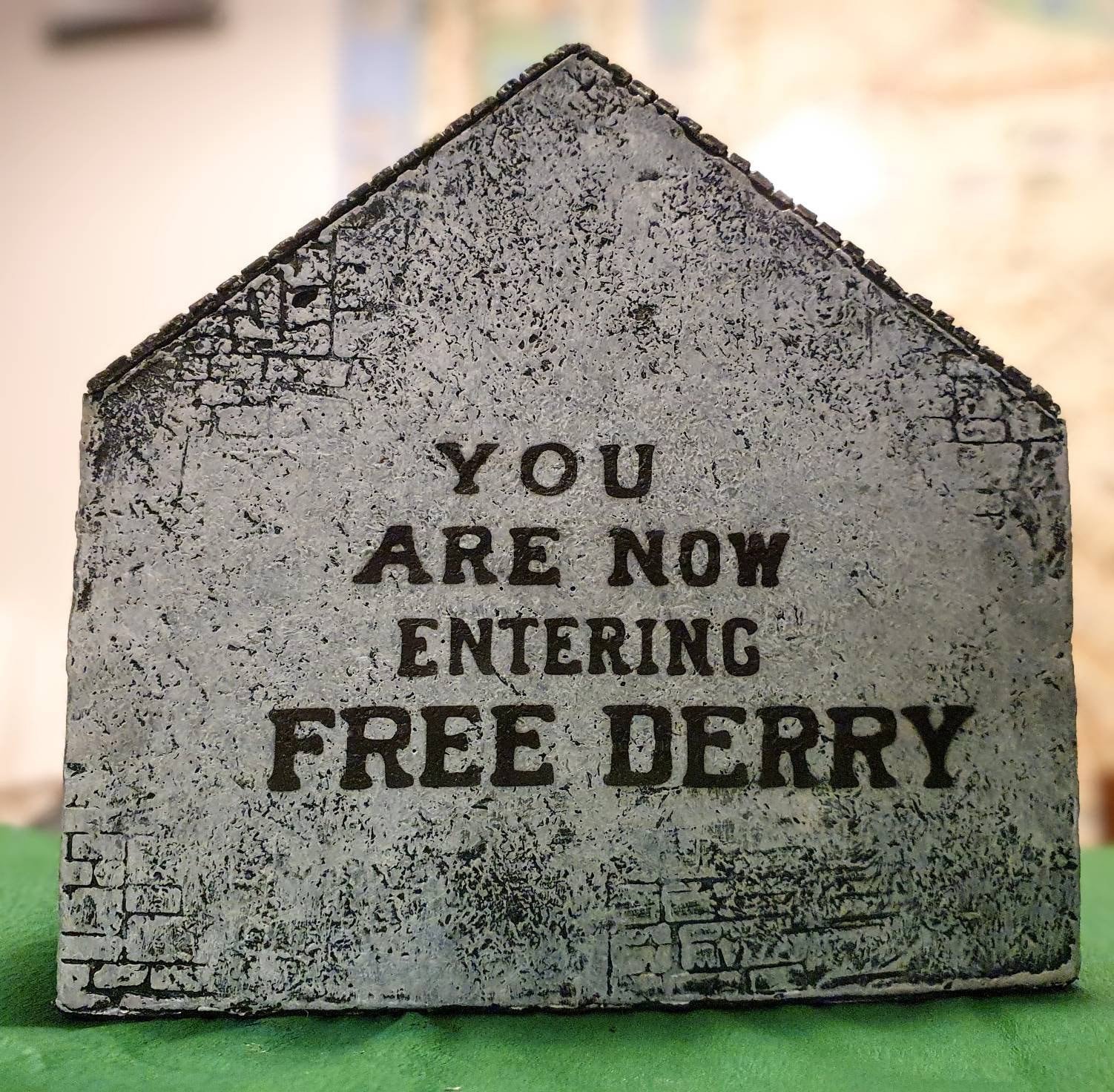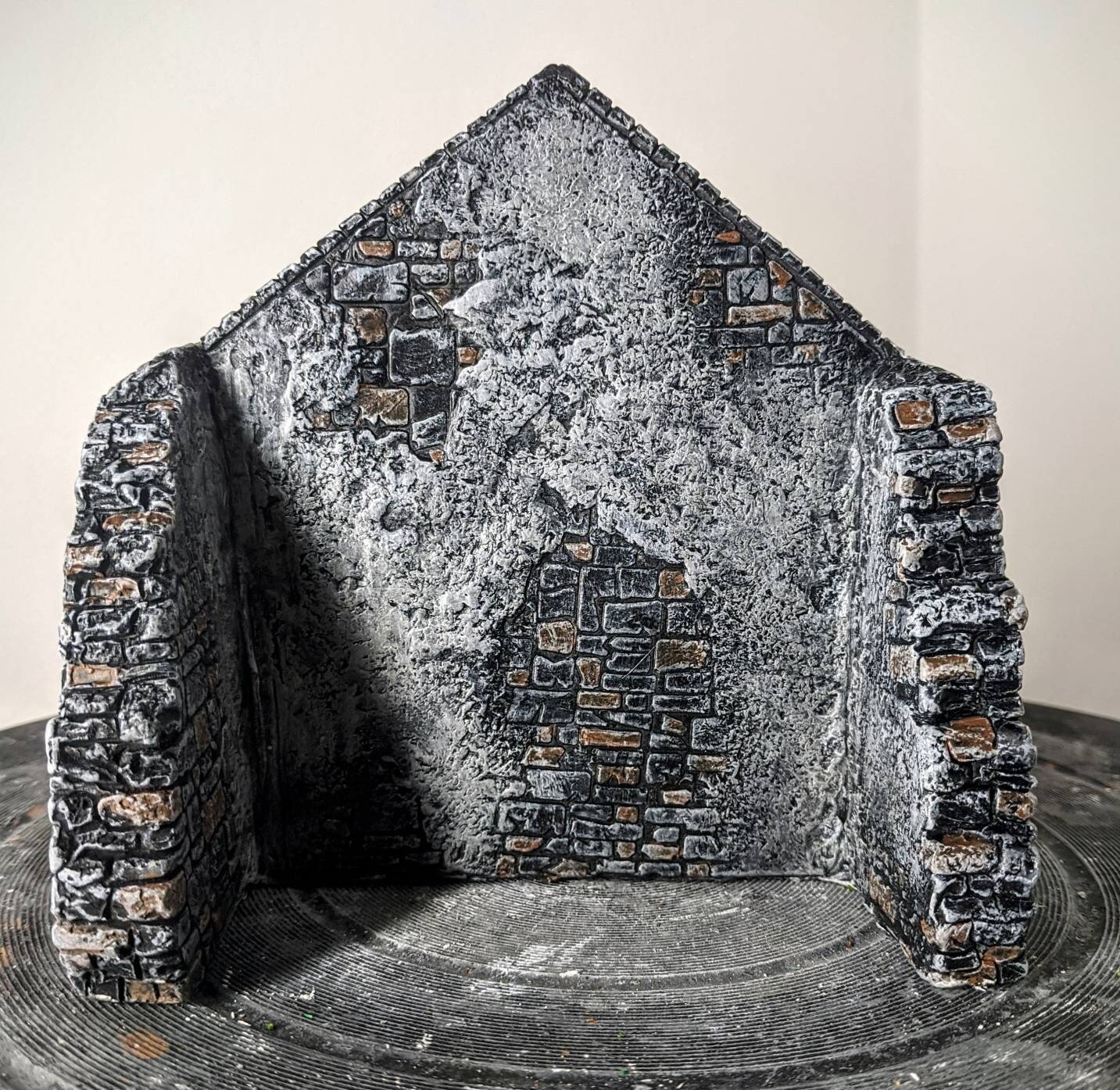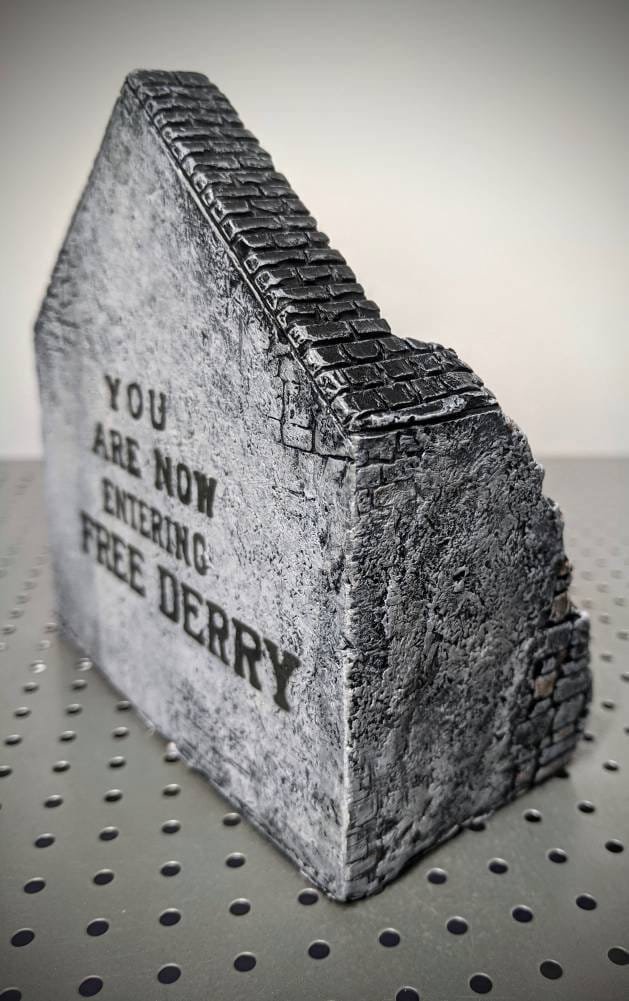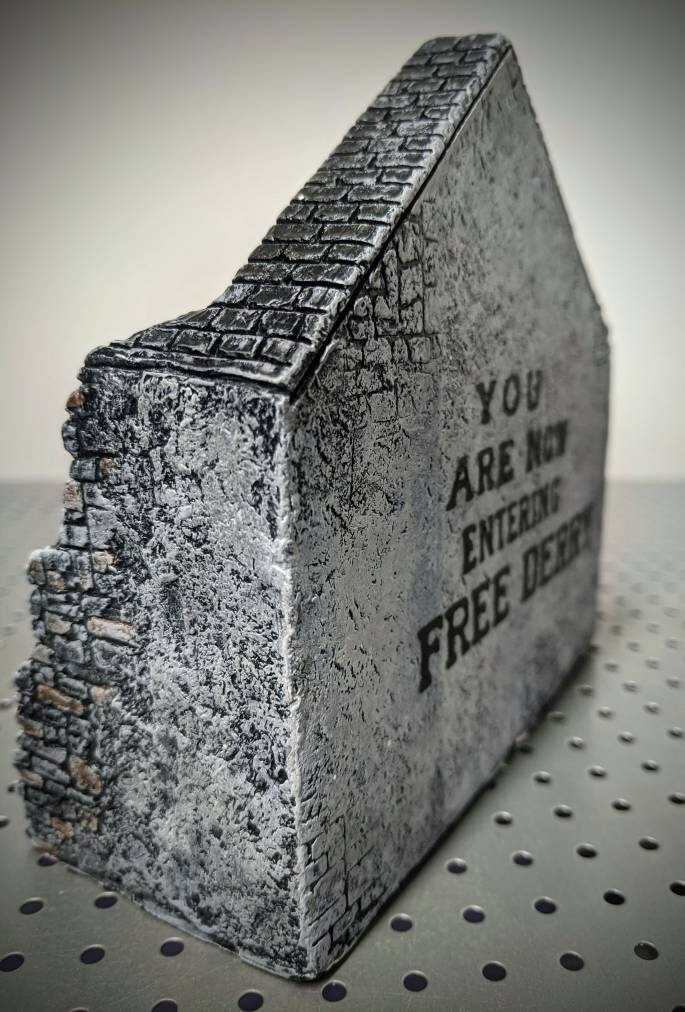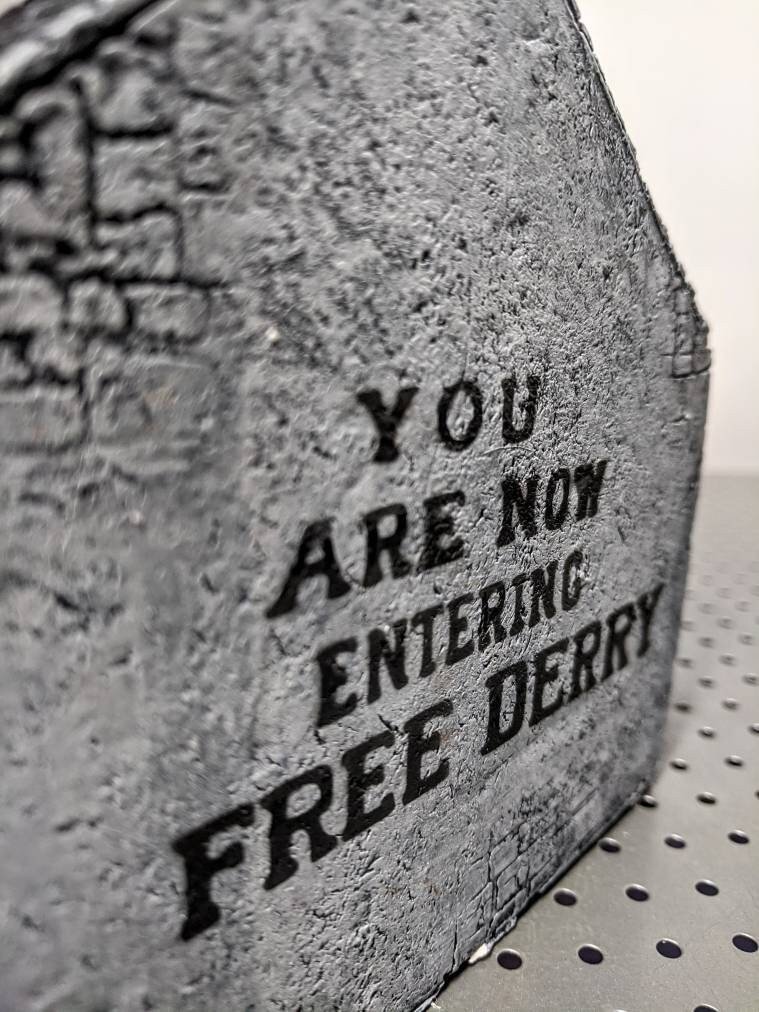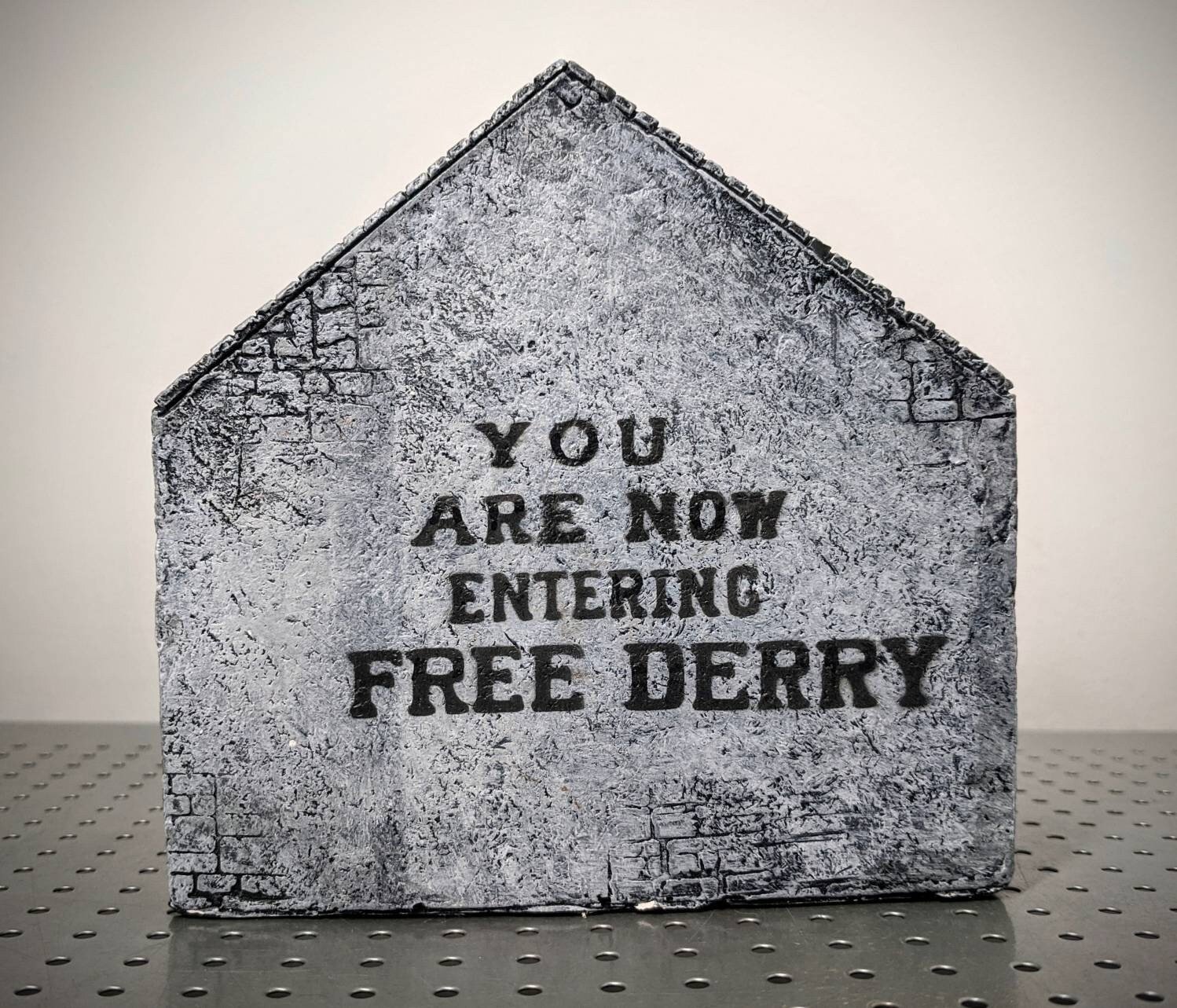Free Derry Corner, Bogside, 1969
£52.00
Free Derry Corner 1969
The gable wall of 33 Lecky Road gained worldwide recognition as a symbol of resistance and beacon of Civil Rights at 3am on January 5th, 1969, when local activist, Liam Hillen, accompanied by Eamon McCann, painted the now famous slogan on the wall. The act was inspired by a midnight incursion into the Bogside by the RUC, following a day of violence when Civil Rights marchers were attacked by Ulster Unionists at Burntollet Bridge while the police looked on. The slogan was later repainted on a white backdrop by ‘Caker’ Casey and signified entry into an autonomous Nationalist area which operated without Police interference between 1969 and 1972. The wall has borne silent witness to some of the most tumultuous events of the ‘Troubles’, with The Battle of the Bogside in August 1969 and Bloody Sunday in January 1972 occurring in the surrounding streets. This recreation celebrates the wall in its most iconic phase during 1969. It now stands, refurbished and repainted regularly, as a globally recognized sounding board for solidarity with oppressed peoples around the world and as a commemoration for a difficult period in Irish history.
The gable wall of 33 Lecky Road gained worldwide recognition as a symbol of resistance and beacon of Civil Rights at 3am on January 5th, 1969, when local activist, Liam Hillen, accompanied by Eamon McCann, painted the now famous slogan on the wall. The act was inspired by a midnight incursion into the Bogside by the RUC, following a day of violence when Civil Rights marchers were attacked by Ulster Unionists at Burntollet Bridge while the police looked on. The slogan was later repainted on a white backdrop by ‘Caker’ Casey and signified entry into an autonomous Nationalist area which operated without Police interference between 1969 and 1972. The wall has borne silent witness to some of the most tumultuous events of the ‘Troubles’, with The Battle of the Bogside in August 1969 and Bloody Sunday in January 1972 occurring in the surrounding streets. This recreation celebrates the wall in its most iconic phase during 1969. It now stands, refurbished and repainted regularly, as a globally recognized sounding board for solidarity with oppressed peoples around the world and as a commemoration for a difficult period in Irish history.
Quantity:
Free Derry Corner 1969
The gable wall of 33 Lecky Road gained worldwide recognition as a symbol of resistance and beacon of Civil Rights at 3am on January 5th, 1969, when local activist, Liam Hillen, accompanied by Eamon McCann, painted the now famous slogan on the wall. The act was inspired by a midnight incursion into the Bogside by the RUC, following a day of violence when Civil Rights marchers were attacked by Ulster Unionists at Burntollet Bridge while the police looked on. The slogan was later repainted on a white backdrop by ‘Caker’ Casey and signified entry into an autonomous Nationalist area which operated without Police interference between 1969 and 1972. The wall has borne silent witness to some of the most tumultuous events of the ‘Troubles’, with The Battle of the Bogside in August 1969 and Bloody Sunday in January 1972 occurring in the surrounding streets. This recreation celebrates the wall in its most iconic phase during 1969. It now stands, refurbished and repainted regularly, as a globally recognized sounding board for solidarity with oppressed peoples around the world and as a commemoration for a difficult period in Irish history.
The gable wall of 33 Lecky Road gained worldwide recognition as a symbol of resistance and beacon of Civil Rights at 3am on January 5th, 1969, when local activist, Liam Hillen, accompanied by Eamon McCann, painted the now famous slogan on the wall. The act was inspired by a midnight incursion into the Bogside by the RUC, following a day of violence when Civil Rights marchers were attacked by Ulster Unionists at Burntollet Bridge while the police looked on. The slogan was later repainted on a white backdrop by ‘Caker’ Casey and signified entry into an autonomous Nationalist area which operated without Police interference between 1969 and 1972. The wall has borne silent witness to some of the most tumultuous events of the ‘Troubles’, with The Battle of the Bogside in August 1969 and Bloody Sunday in January 1972 occurring in the surrounding streets. This recreation celebrates the wall in its most iconic phase during 1969. It now stands, refurbished and repainted regularly, as a globally recognized sounding board for solidarity with oppressed peoples around the world and as a commemoration for a difficult period in Irish history.
Dimensions: “5 high, 6” wide.
FREE SHIPPING WORLDWIDE
